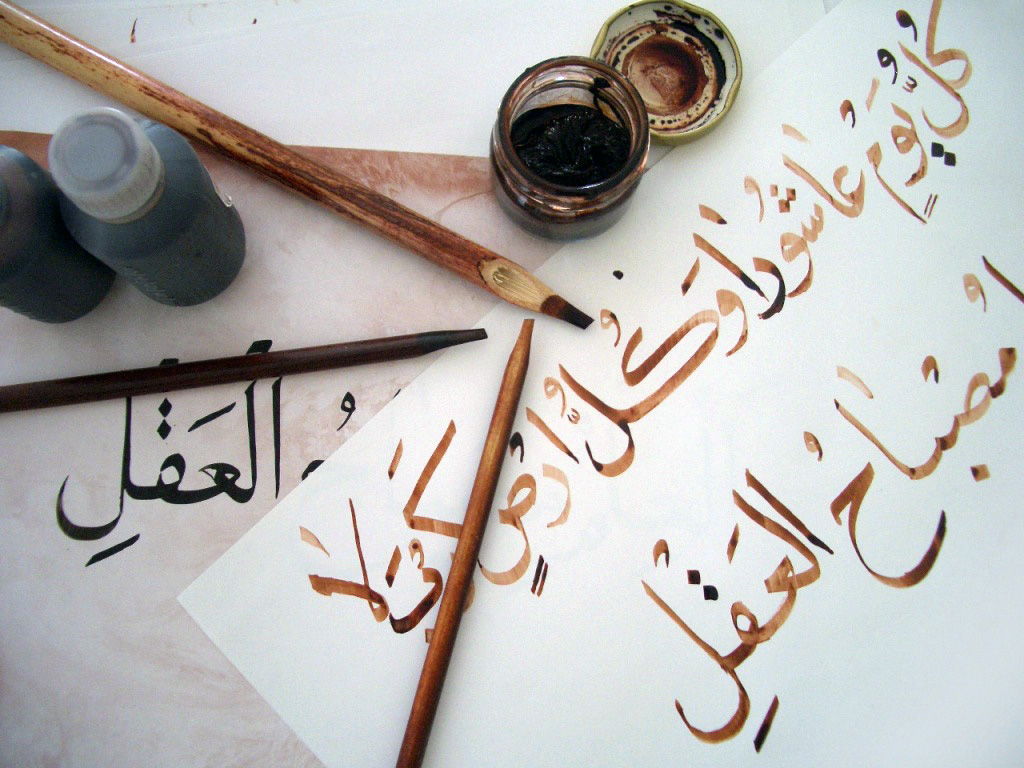
In the Islamic world, calligraphy is an art which deserves special attention and reverence, since it guarantees the preservation of the holy Qu’ran. There are other philosophical reasons for the respect it commands; if, as the ancient Arab philosophers suspected, a rose and its name are essentially the same thing, then the art of writing the sounds we utter – of trapping them in a physical form – acquires a mystical, almost magical quality.
Prior to the invention of print, Arab calligraphy was instrumental in the effective transmission of knowledge during the Middle Ages. Sinuous and dynamic, with its technique to link letters one to another in a seemingly effortless way, it allowed scribes to copy their texts at much greater speed than their Christian counterparts; for this reason, whilst European monasteries usually treasured a few dozen books, libraries in the Arab world would keep hundreds or even thousands of them. This is true to the point that a vast majority of the classical texts that have reached us, did so through the Arabs.
Calligraphy also has a figurative side, and it is used to decorate buildings and mosques, where the words written combine to form arabesques and geometric patterns in order to embellish walls, ceilings, furniture, and even jewellery and cloths.
Our calligraphy lesson takes place in the garden of your hotel, or else in the studio that our calligraphist, Hamza Abderrahim, has in the Menara Gardens.
Despite his youth, Hamza Abderrahim is one of the greatest masters of this art nowadays, and an appointed calligraphist to the King of Morocco. With Hamza, you will learn about the many different styles of writing that have developed through the centuries, and the basic principles of Arab’s alphabet, before trying your skills at the use of the qalam, the dried piece of reed or bamboo with which Arabs traditionally write. Get in touch if you would like to know more about this fascinating activity.
